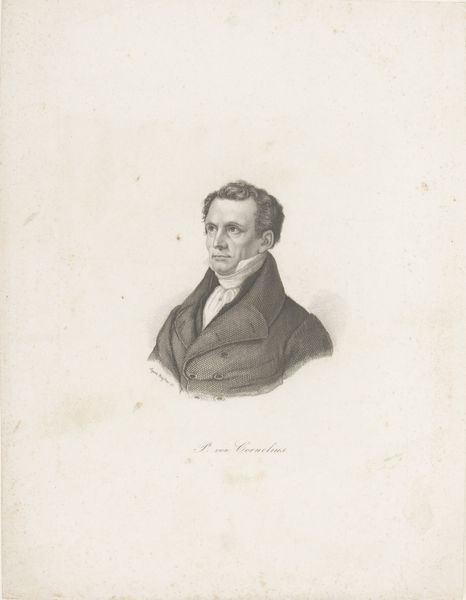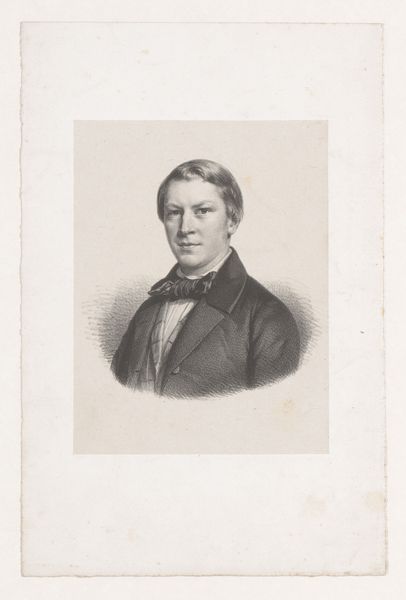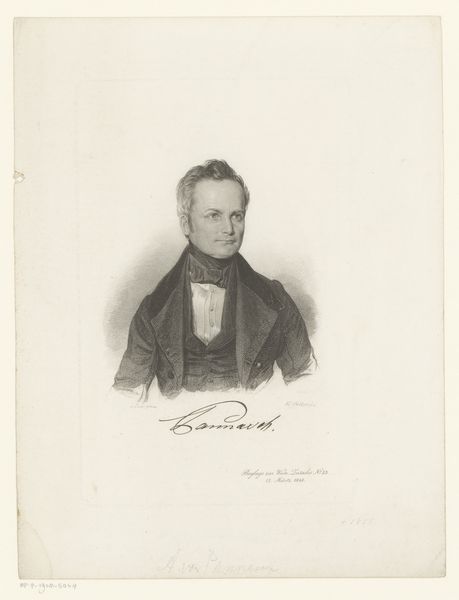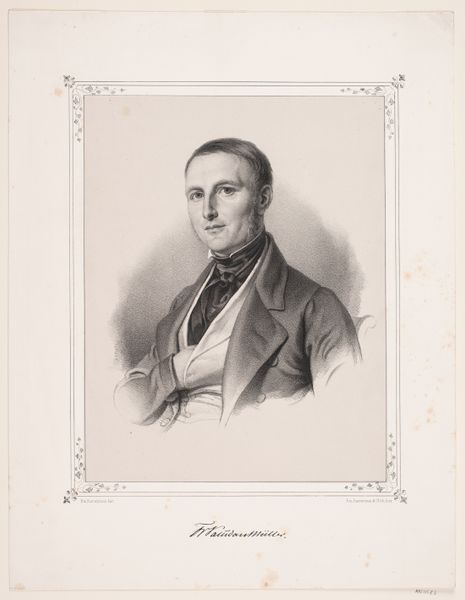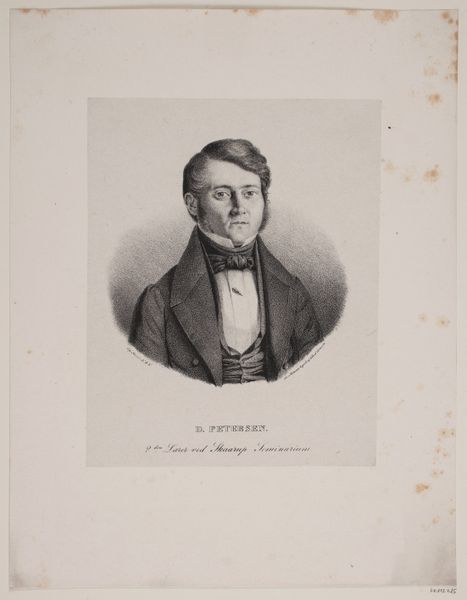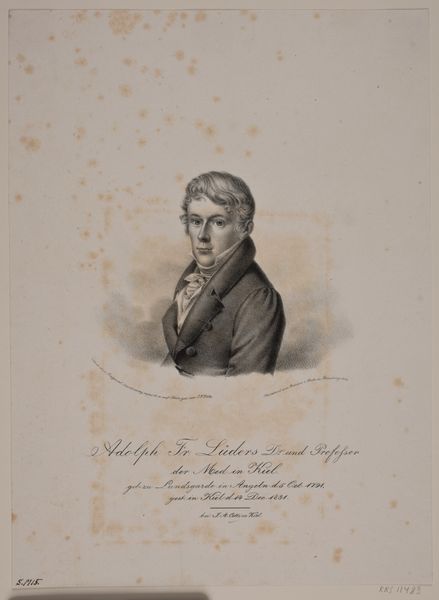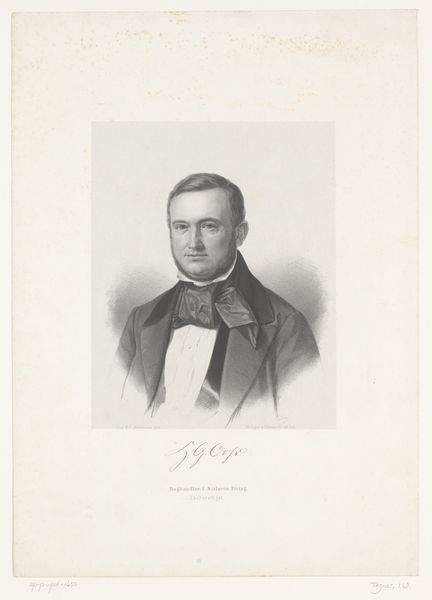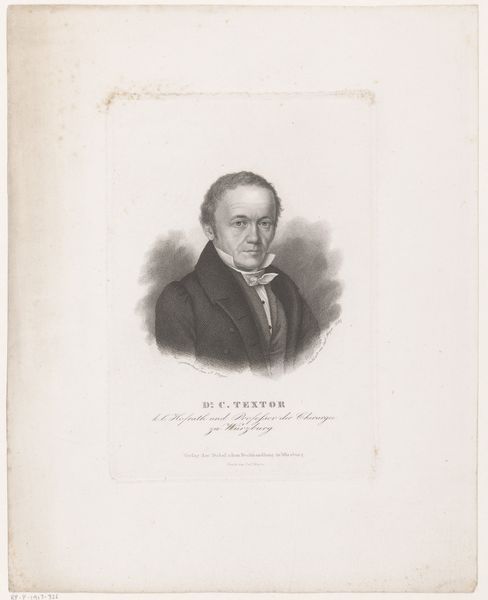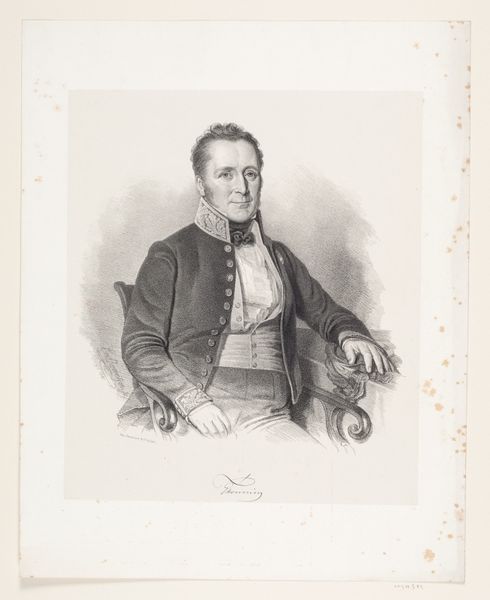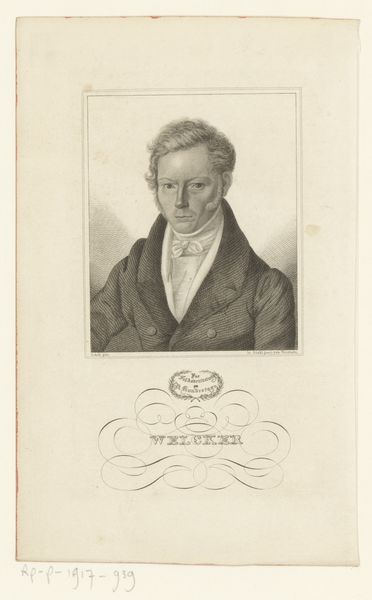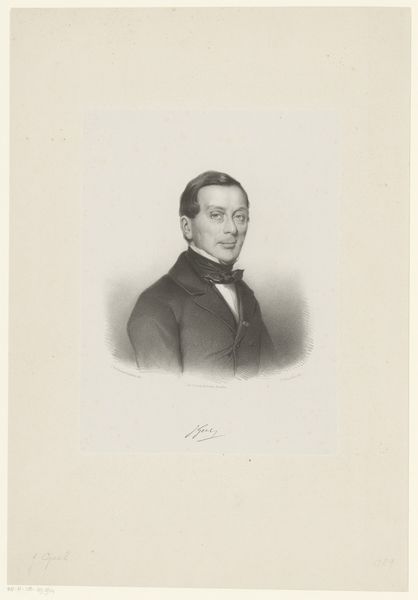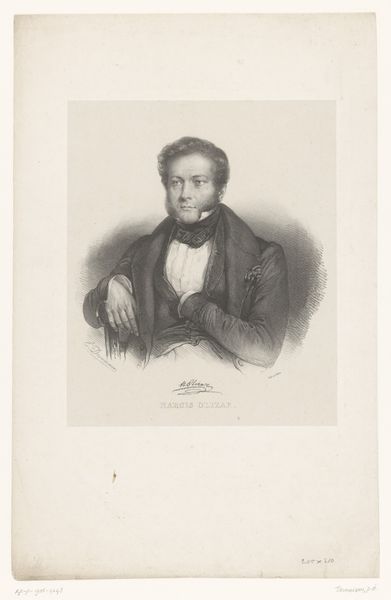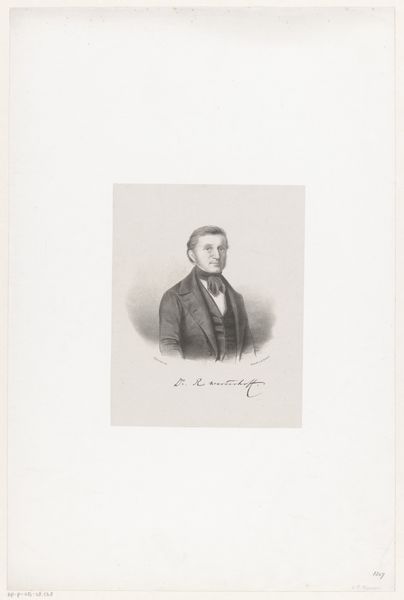
drawing, lithograph, print, pencil
#
portrait
#
pencil drawn
#
drawing
#
lithograph
# print
#
pencil sketch
#
old engraving style
#
pencil drawing
#
romanticism
#
pencil
#
portrait drawing
#
pencil work
Dimensions: height 254 mm, width 207 mm
Copyright: Rijks Museum: Open Domain
Curator: This is a portrait of the oboist Henri Brod, dating from around 1835, made by Antoine Catherine Adolphe Fonrouge. It's a lithograph, so a print made from a drawing, likely in pencil originally. Editor: You know, what strikes me first is how… earnest he looks. Very buttoned-up, literally and figuratively. But there’s also a hint of a smirk. Like he knows something we don’t, perhaps the secret to hitting those high notes on the oboe! Curator: Well, the Romantic era valued expressiveness, but also a sense of decorum. This portrait probably reflects the public image Brod wanted to cultivate as a respectable musician and composer. Notice the detailed rendering of his clothing and the crispness of the line, aiming for realistic likeness. Editor: Absolutely. And the hatching gives him real presence, lifting him off the page. But the soft focus around the edges feels like it belongs to the world of dreams, adding to the sense of the sublime, just a touch. I wonder, was he happy with it, do you think? As a musician, your image is your currency in a way, isn’t it? Curator: The success of a portrait like this depended on many factors: the sitter's social standing, the artist's reputation, and, of course, the prevailing aesthetic tastes. Printmaking also democratized portraiture. Previously, only the wealthy could afford painted portraits, but now, a wider audience could access images of prominent figures like Brod. Editor: A kind of Instagram for the 19th century! It makes me think about the curated image and what it is hiding. And who gets to control that narrative? He has the ‘look of a composer’ but he also looks constrained and proper – one has to ask was it for effect or by force? It’s hard to say for sure, the image is more complicated, for me, the more I look at it. Curator: It also highlights the rise of the virtuoso musician as a cultural celebrity. Composers were elevated and the art celebrated; and as music shifted from the private salon to the public concert hall, musicians like Henri Brod acquired fame and influence that made their image marketable and their opinion powerful. Editor: Exactly, art creates a buzz around you – so, I suppose, that maybe he wouldn’t play his oboe in just *any* saloon, that there might be an audience there worthy of such performance. Anyway, it's fascinating how much social history is baked into a simple lithograph. Curator: Indeed, what appears to be just a likeness reveals a much larger story. The complex world of music appreciation and consumption within 19th-century Europe. Editor: And the eternal question of art, isn’t it, “Who am I in the face of the art, the market and the establishment?" Anyway, now when I listen to the oboe, I will definitely think of Brod, wrestling with that very question, buttoned up against the world!
Comments
No comments
Be the first to comment and join the conversation on the ultimate creative platform.
